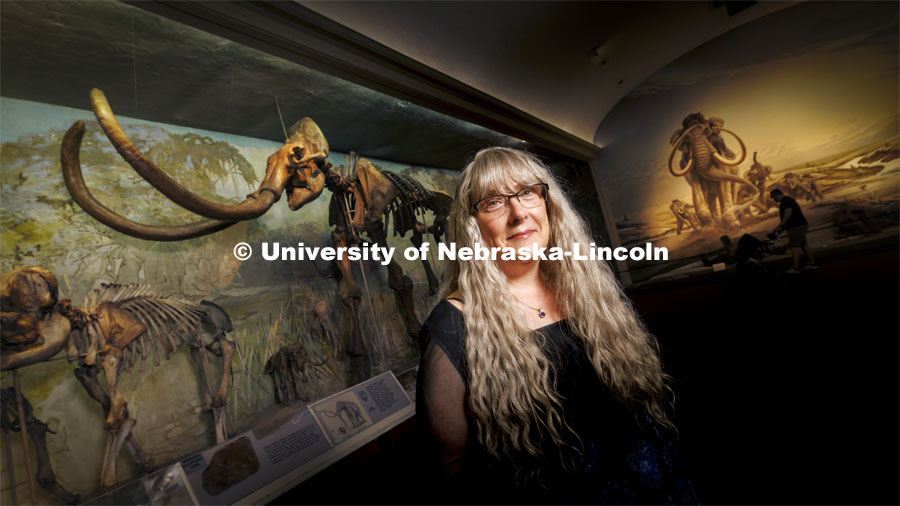
Title:
220722 Lyons 033 (permalink)
Order Instructions:
To order this photo, send Craig Chandler an email and include the text '220722 Lyons 033'.
Caption:
Nebraska’s Kate Lyons, Assistant Professor, School of Biological Sciences, stands in Elephant Hall at the University of Nebraska State Museum. Behind her looms Archie, the largest Columbian mammoth fossil in the world. A study from Lyons and colleagues has found that the extinction of large mammal species, including the Columbian mammoth, likely contributed to the homogenization of North America’s mammal communities. July 22, 2022. Photo by Craig Chandler / University Communication.
Copyright:
© 2022, The Board of Regents of the University of Nebraska. All rights reserved.